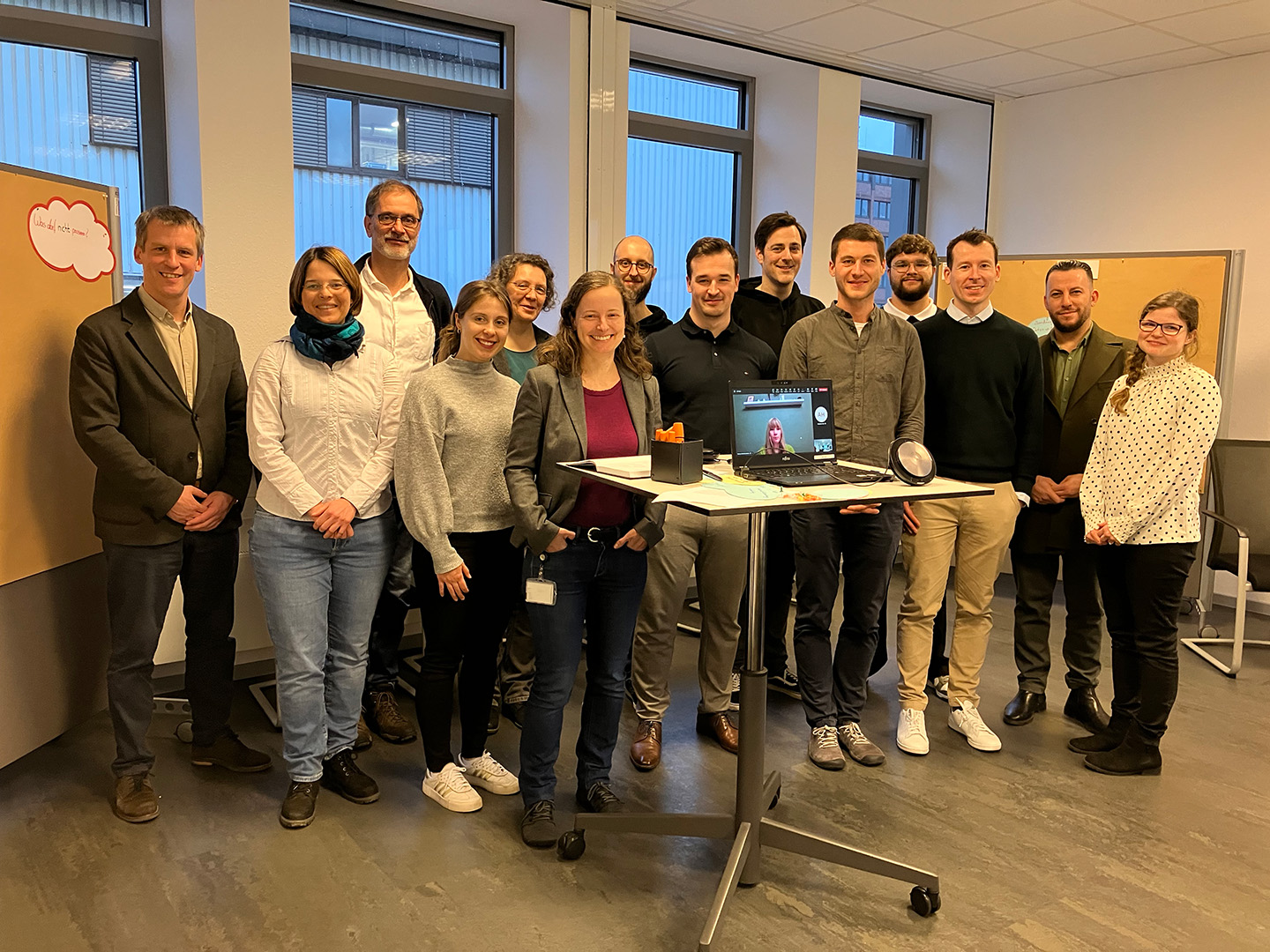Heat transition
How municipalities design and successfully implement their heat planning across sectors
The "Heat Planning and Decarbonization of Heating Networks Act" came into force on January 1st, 2024. This requires Germany's municipalities to undertake a municipal heat planning by developing strategies for the conversion of their energy supply to renewable energies and unavoidable waste heat. The partners in the newly launched joint project "KommWPlanPlus" are focusing on how these plans can be designed across sectors and successfully implemented in practice.

The network partners behind the "Research and development cluster for linking municipal heat planning with the implementation planning of integral measures in the district" – the full title of the project – are the Fraunhofer Institute for Environmental, Safety and Energy Technology UMSICHT, items GmbH & Co. KG, the City of Wuppertal, WSW Wuppertaler Stadtwerke GmbH, the City of Hagen, Enervie Service GmbH, the City of Garbsen and Stadtwerke Garbsen GmbH as well as the association Civitas Connect e. V. Together, they are investigating how municipal heat planning can be consolidated as a long-term planning task in organizational and technical terms and how it can be further developed towards integrated implementation planning under consideration of changing requirements. The special feature: In Wuppertal, Hagen and Garbsen, municipal heat planning is running parallel to the project, so that the practical work flanks the scientific work.
In a first step, the basics of intersectoral concept development and evaluation are being developed. Experience from so-called implementation projects at the three locations will play a major role in this. “If a municipal utility plans to redesign the heat and power supply in a district, this project should be taken into account in the heat planning process," says Dr. Anne Hagemeier from Fraunhofer UMSICHT, citing one example. "How does heat planning affect electricity solutions and grids? Where can links be established?"
Another focus of the project is on methods and tools for integrating the results from the more strategic municipal heat planning into integrated implementation planning at the level of specialist and detailed planning. They are also being developed in close cooperation with the three practical locations in order to ensure applicability and transferability as well as continuity and updating. Anne Hagemeier: "The formats we will develop and select will help to ensure that municipal heat planning is increasingly implemented, further developed as an important integral planning tool and also made permanent. That's what the plus in the name of our project stands for."
In order to make the results of the project available to other municipalities, the partners are taking different approaches. For example, they want to initiate a series of events. The aim is to address local authorities in a way that is tailored to their stakeholders in order to empower them for the upcoming tasks in the context of the municipal energy transition and to accelerate the implementation of municipal heat planning. This is also to be supported by a guideline in which the key results of "KommWPlanPlus" are presented in a practical way.
FUNDING NOTICE
The joint project "KommWPlanPlus – Research and development cluster for linking municipal heat planning with the implementation planning of integral measures in the neighborhood" is funded by the Federal Ministry of Economics and Climate Protection as part of "EnEff:Stadt". The project sponsor is Forschungszentrum Jülich GmbH.
Last modified:
 Fraunhofer Institute for Environmental, Safety and Energy Technology UMSICHT
Fraunhofer Institute for Environmental, Safety and Energy Technology UMSICHT